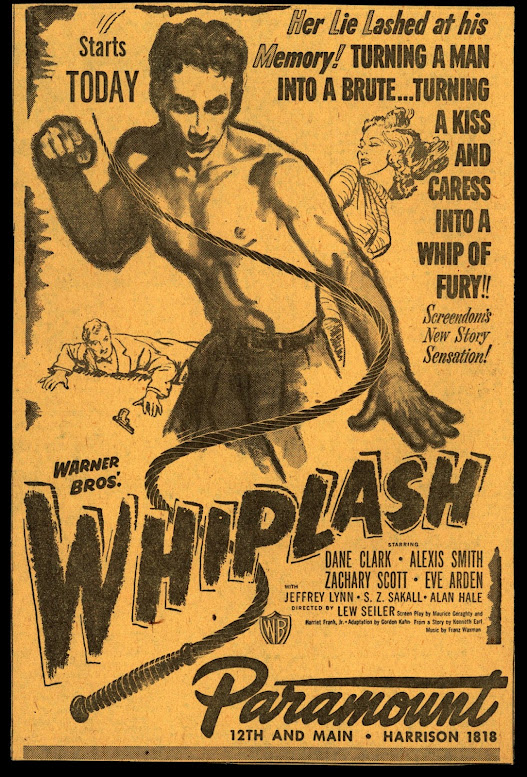Whiplash (1948) Is Postwar Treading of Warner Water

5 Comments:
A broad question: Did Warner have to edit or alter any films that had aged in that time? Certainly when WWII heated up, films made in peacetime had to be flagged as such ("Ninotchka"), or trimmed of suddenly loaded matter ("Laura" clipped some scenes of unpatriotic luxury; a re-released "Night of the Opera" lost footage that clearly set the opening scenes in Italy).
I believe some war-themed serials tacked on intros placing them more firmly in past tense ("Now it can be told!"). I'm wondering if other factors -- the Cold War, image-conscious businesses, major lawsuits -- might have made what was safe in '47 unsuitable in '49.
Where is the cartoon on your header from? Clearly not a fan of Disney.
I think one of the animators drew this as an in-house gag to amuse co-workers.
Definitely by Floyd Norman, an official Disney Legend whose career reaches from "Sleeping Beauty" to Pixar. He was originally hired as an animator, but his gag cartoons -- picking up on an industry tradition going back to the 30s -- caught the attention of management. Instead of getting fired he was moved to the story department and worked on several features as well as newspaper comics. He's still around, working mostly but not exclusively for Disney.
Google him and choose "images" and you'll find plenty of his drawings, including "straight" renderings of Disney characters. He's written of his admiration for Walt Disney, but did gags about Disney's temper and of terrified animators waiting for his judgment of their work. Norman's drawings more often target post-Walt Disney executives and corporate culture, and he'll sometimes draw Mickey Mouse as a sleazy old Hollywood type on the make.
Neat. Thanks.
Post a Comment
<< Home